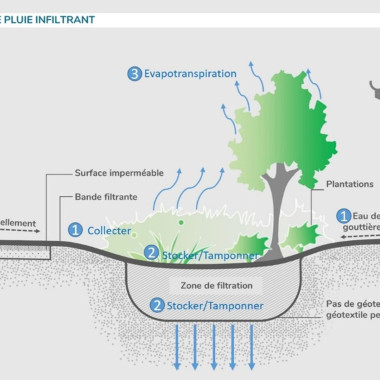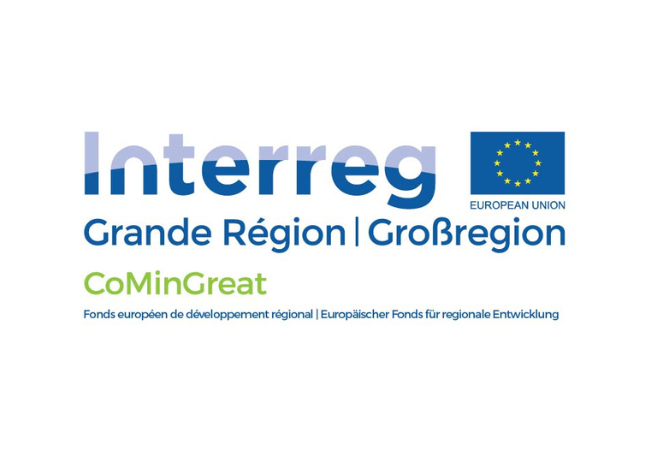Water Smart Cities Project
Article

Article

Micropollutants are a growing challenge in the urban water cycle. These substances reach surface waters through the discharge of urban wastewater into the natural environment (municipal wastewater treatment plants and stormwater discharges), as well as through diffuse discharges (e.g. agricultural soil leaching). Various studies have shown that effluent from wastewater treatment plants is one of the main sources of many micropollutants. There are many scientific studies and action plans on this subject, with experts in every European country. However, there is still little exchange between decision-makers when it comes to jointly managing the quality of a receiving environment in a catchment area that crosses several borders. This is the background to the CoMinGreat project. CoMinGreat is a European INTERREG project in the Grande Région zone (Grand Duchy of Luxembourg, Wallonia, Eastern France and the German Landers of Saarland and Rhineland-Palatinate). The project has made it possible to collect and harmonise knowledge on the subject of micropollutants in the Grande Région, to extend existing skills, to transfer knowledge and to encourage cross-border cooperation.
The project included a technical part involving the design and operation of a demonstration centre to test so-called nature-based technologies and compare them with conventional technologies. The second part involved analysis of the data collected (demonstrator and measurement campaigns), modelling (choice of the most relevant additional treatments) and visualisation of the data collected (interactive map).
The demonstrator comprises four additional treatment technologies, including planted filter technology with optimised substrate (FP), a combination of photo-Fenton pre-treatment and planted filter (PF-FP), the more conventional technologies of activated carbon (CA) and a combination of ozonation pre-treatment followed by adsorption on activated carbon (O3-CA). The demonstrator was installed after the clarifier at the Bliesen wastewater treatment plant (Germany). This 13,000 p.e. WWTP, which processes almost exclusively urban wastewater, treats carbon, total nitrogen and phosphorus (by adding FeCl3).
The performance of the various units was measured in terms of their ability to eliminate various micropollutants (pharmaceutical, phytosanitary, food and industrial residues). In addition, particular attention was paid to the presence, development and release of antibiotic-resistant bacteria.
The results showed that the conventional treatment plant already eliminates more than 80% of caffeine, ciprofloxacin, DEET, glyphosate, ibuprofen and acetyl-sulfamethoxazole.
Unsurprisingly, conventional processes (CA and O3-CA) enable the majority of micropollutants to be removed. The addition of pre-oxidation significantly broadens the range of micropollutants removed.
The FP process alone eliminated 19 of the 23 quantifiable compounds. The addition of an advanced oxidation pre-treatment removed 2 more compounds.
As regards macropollutants, the planted filters showed significant additional purification capacity for total residual phosphorus.
Bacteriological analyses showed no development or release of antibiotic-resistant bacteria during the year of operation. It should be noted, however, that this project was not designed to investigate long-term risks.
During the project, two models were developed in order to identify the most appropriate technology for achieving the quality objectives of the receiving environment.
The first model applies to the scale of the treatment plant, with the introduction of the additional treatment processes studied via the demonstrator. This model, developed on MATLAB by the University of Lorraine, simulates the fate of micropollutants during the various stages of treatment.
The second model is applied at catchment scale. It simulates the quality status of a watercourse in space and time using a variable flow model. The aim is to visualise and predict the effect of installing additional treatment (at the outlet of a wastewater treatment plant) on the river's quality status. This tool makes it possible to identify the location and type of treatment with the greatest impact on surface water quality, and thus to optimise investment.
The project's internet platform (comingreat.eu) contains theoretical information on micropollutants, their sources, the legislation in force in the countries of the Greater Region and the technologies studied during the operation of the demonstrator.
The undeniable added value of the site is the interactive map. This displays a range of data, including concentrations measured at monitoring stations in the Greater Region for four reference molecules (clarithromycin, diclofenac, carbamazepine and 1H-benzotriazole).
Two other maps are available, containing data on the specific concentration of diclofenac and a list of measurement programmes and feasibility studies on wastewater treatment plants in the Greater Region.
A part of the site (wiki), accessible by registration to professionals in the sector, shares more information on micropollutants.
The project is part of the 2014-2020 INTERREG V A ‘Grande Région’ cross-border European territorial cooperation programme. It brought together the skills of universities (University of Luxembourg, Centre National de la Recherche Scientifique, Délégation Centre Est / Université de Lorraine, University of Kaiserslautern), public services (Entsorgungsverband Saar - EVS, Germany) as well as the competitiveness cluster (HYDREOS, France) and private enterprise (CEBEDEAU, Belgium). It was financed mainly by European ERDF funds (60%), with some local co-financing: the Ministry for the Environment and Climate of Saarland and Rhineland-Palatinate, the government of the Grand Duchy of Luxembourg and the public services of Wallonia.

Article

Article

Event
